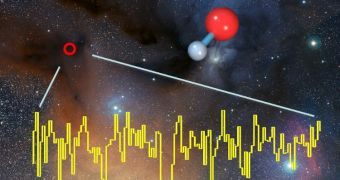The only airborne observatory in the world has just finished testing its new science instrument, a device that will enable it to conduct studies in terahertz wavelengths. Details of the investigations it conducted are published in a special, May 10 issue of the journal Astronomy & Astrophysics.
The Stratospheric Observatory for Infrared Astronomy (SOFIA) is a joint project between NASA and the Deutsches Zentrum für Luft- und Raumfahrt (DLR), the German Aerospace Center. The telescope is installed on a heavily modified Boeing 747SP aircraft.
Recently, engineers have finished installing the German Receiver for Astronomy at Terahertz Frequencies (GREAT) instrument aboard the aircraft. This receiver can also detect far-infrared wavelengths, in addition to T-waves. Its range extends all the way to microwave frequencies.
GREAT was developed by the Max-Planck Institute for Radio Astronomy (MPIfR), the Universität zu Köln KOSMA, the Max-Planck Institute for Solar System Research (MPI-SSR) and the DLR Institute for Planetary Research, Science Daily reports.
German researchers wanted to build an instrument capable of detecting a series of wavelengths that cannot be seen by infrared detectors on the ground, primarily due to the fact that water vapors in the atmosphere absorb them.
“The high resolving power of the GREAT spectrometer is designed for studies of interstellar gas and the stellar life cycle, from a protostar's early embryonic phase when still embedded in its parental cloud to an evolved star's death when the stellar envelope is ejected back into space,”says Rolf Güsten.
“This stunning collection of first scientific results is reward for the many years of development work, and underlines the huge scientific potential of airborne far-infrared spectroscopy,” adds the MPIfR expert, who is the principal investigator for the new instrument.
NASA experts say that GREAT conducted its first observations from aboard SOFIA in November of last year. Thus far, researchers who worked with the instrument have produced a series of 22 scientific papers, a list of which can be viewed here.
“The rich harvest of scientific results from this first observing campaign with SOFIA and the GREAT instrument gives a first glimpse of the tremendous scientific potential of this observatory and promises unique astronomical observations for years to come,” Hans Zinnecker adds.
He holds an appointment as the Deputy Director of the SOFIA science mission, and is based at the University of Stuttgart's Deutsches SOFIA Institut (DSI).

 14 DAY TRIAL //
14 DAY TRIAL //